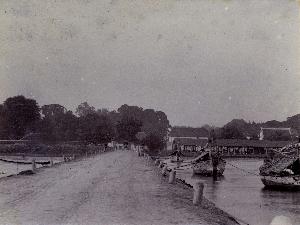Willem Thomas De Vogel
Willem Thomas De Vogel;Dr. W. Th. De Vogel
Place: Toeban (Now Tuban)
Born: 1863
Death: 1955
Biography:
, a colonial Dutch doctor and official, was born in Toeban (now Tuban) in the Dutch East Indies (now Indonesia) in 1863. He established the Department of Public Health in the Dutch East Indies and played a significant role in the development of the region.
Early Life and Education
De Vogel's early life and education are not well-documented, but it is known that he was married to Frédérique Jeanne Louise de Vogel in 1886. He was a prominent figure in the Dutch East Indies and worked closely with other officials to improve public health in the region.
Artistic Career
Although De Vogel's work as a doctor and official is well-documented, his artistic career is not as well-known. However, it is believed that he was an amateur artist and created several paintings during his lifetime. Unfortunately, there is not enough information available to provide a detailed account of his artistic career.
Legacy
De Vogel's legacy is significant, and his contributions to the development of public health in the Dutch East Indies are still recognized today. He was a dedicated official who worked tirelessly to improve the lives of those in the region. His work as a doctor and official has had a lasting impact on the region, and his artistic endeavors, although not well-documented, are a testament to his creative spirit.
- De Vogel's work as a doctor and official is recognized by the Museum Huis ten Bosch, which features works by several famous artists, including Pieter De Grebber and Jacob Jordaens.
- The Wikioo.org website features a biography of De Vogel, highlighting his contributions to the development of public health in the Dutch East Indies.
- De Vogel's artistic endeavors are not well-documented, but it is believed that he created several paintings during his lifetime, including The Kiss 2, which is featured on the Wikioo.org website.
figures like De Vogel have played a significant role in shaping the history of the Dutch East Indies, and their contributions should be recognized and celebrated. The Wikioo.org website provides a valuable resource for learning about the lives and works of artists like De Vogel, and it is an important tool for preserving the cultural heritage of the region.
Conclusion
In conclusion, Willem Thomas De Vogel was a dedicated official who worked tirelessly to improve public health in the Dutch East Indies. His artistic endeavors, although not well-documented, are a testament to his creative spirit, and his legacy continues to be recognized today. The Wikioo.org website provides a valuable resource for learning about De Vogel's life and work, and it is an important tool for preserving the cultural heritage of the region.

